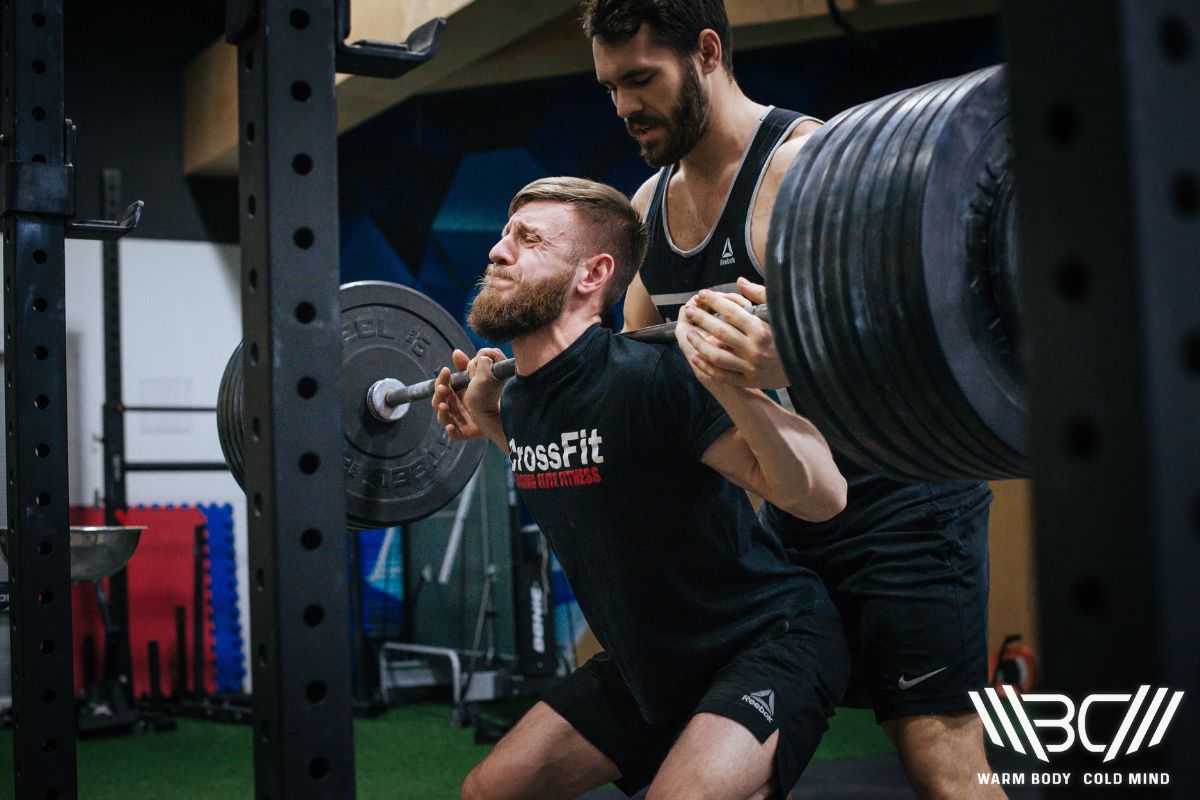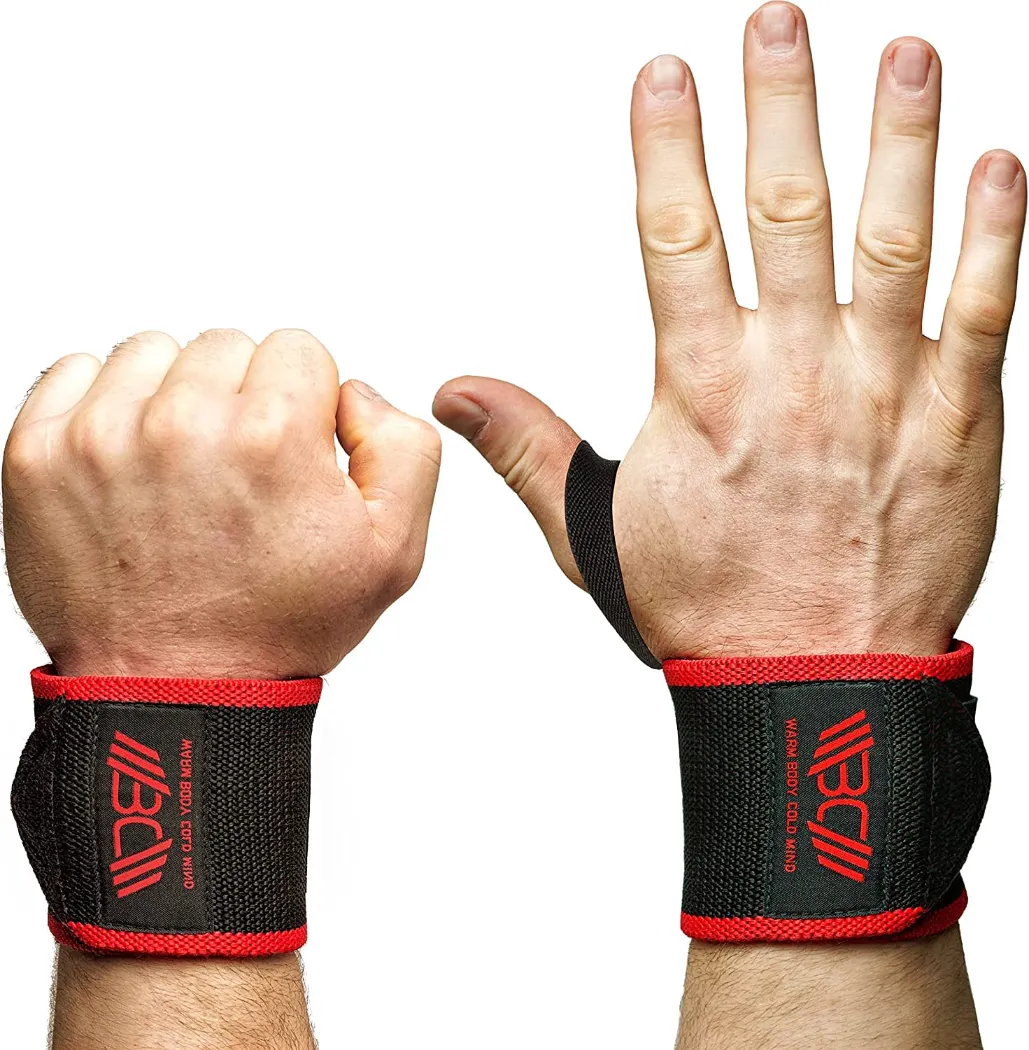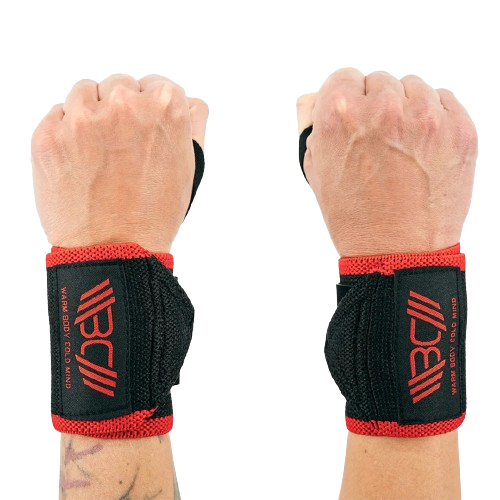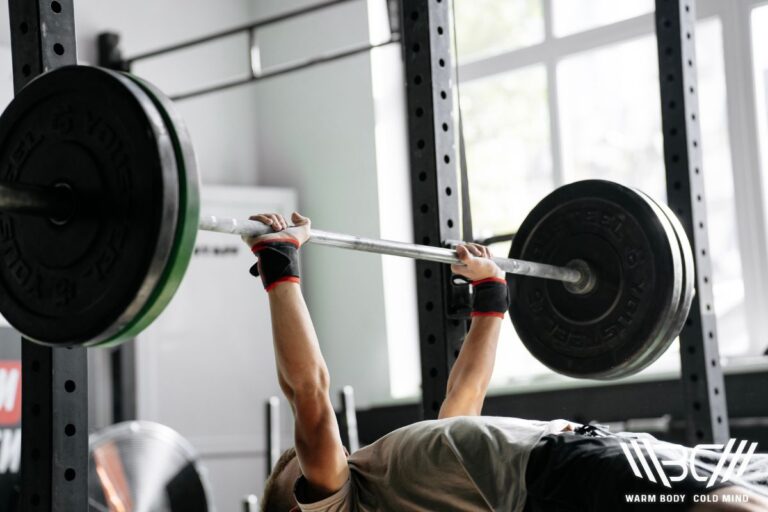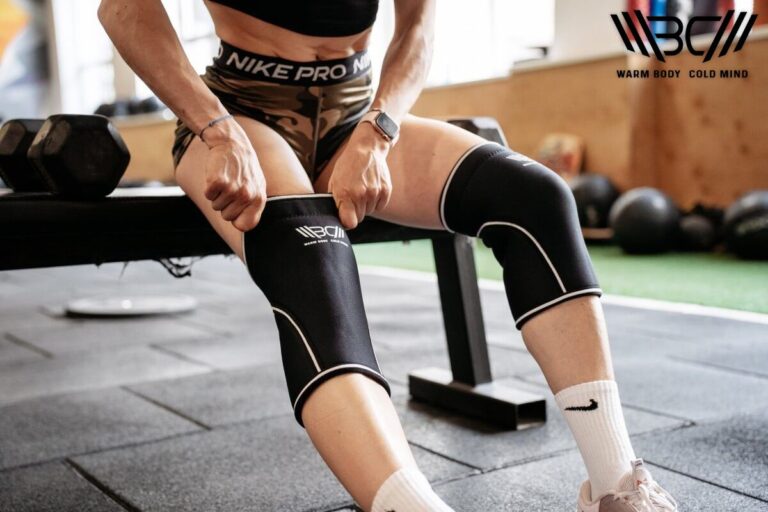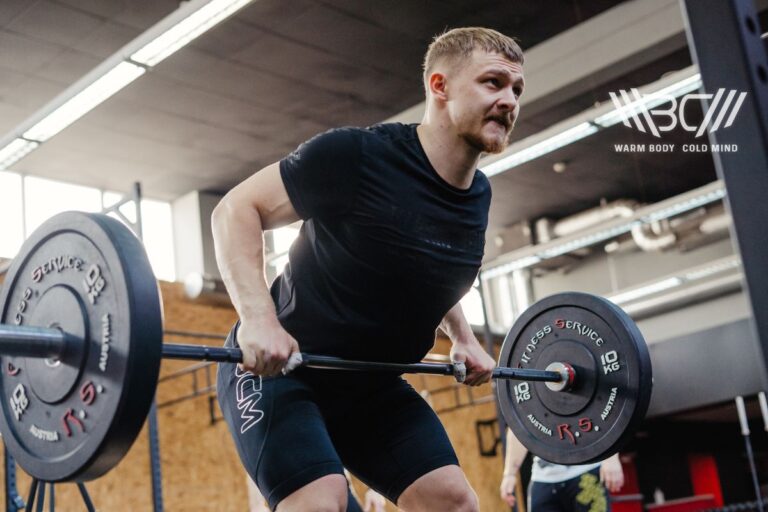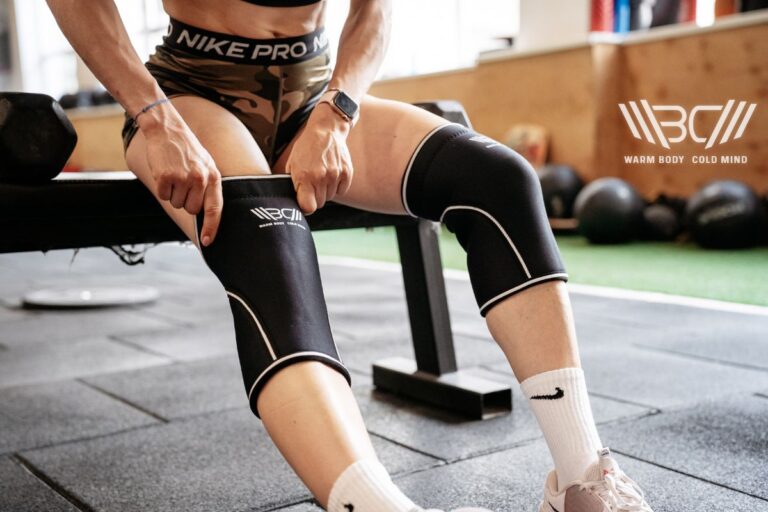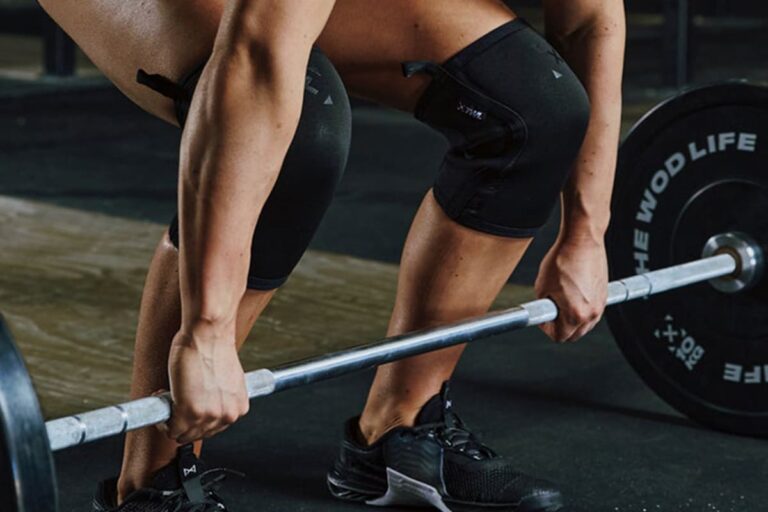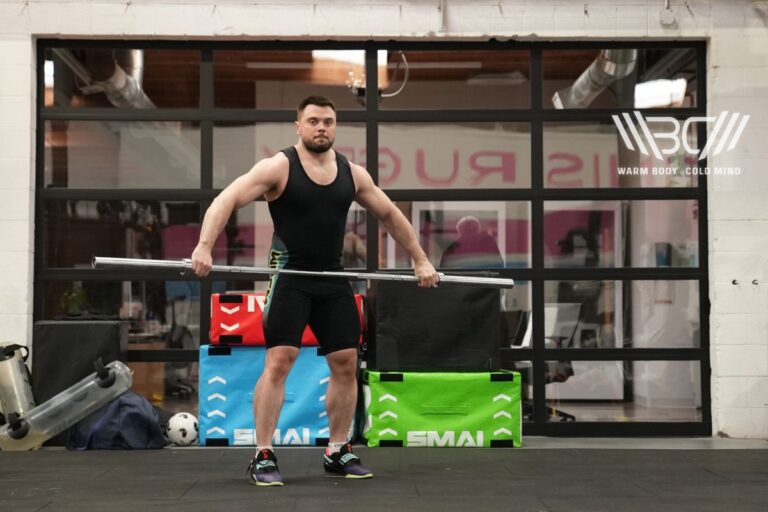Low Bar Squat Wrist Pain: Causes & Prevention
MEDICAL WARNING: This article is for informational purposes only and is not intended to be a substitute for professional medical advice. If you experience any health problems while exercising or using supplements, consult your doctor.
Lifters frequently report low bar squat wrist pain. Squatting is a basic human movement. You can practice it with or without weights, a barbell placed in front or across your back, and with either a high or low bar position.
The switch from high (where the bar is placed on the trapezius muscle on the top of your shoulder) to low (where posterior deltoids make a station) brings many benefits and challenges.
Research suggests muscle activity is significantly higher during low bar back squats, especially in the posterior chain. This variation should be preferred to emphasize strong hip muscles and lift the greatest loads possible.
However, you must have excellent shoulder mobility to slide deeper under the racked bar. It may mess up your grip technique, resulting in wrist pain. However, low bar squats are too good to avoid. We must spot and eliminate downsides.
How to get rid of low bar squat wrist pain? – A faulty technique is the top reason behind wrist pain during low bar squats. You’re supposed to maintain a neutral wrist position. If you involve your hands in lifting (not merely stabilizing) the weight, feeling wrist pain is imminent.
Wrist Anatomy For Lifters: A Brief Overview
Before we dive into specific reasons and solutions, let’s join ‘Anatomy 101.’The carpus essentially makes up the wrist. With the help of ligaments, it connects forearm bones at one end and five metacarpal bones of your hand on the other. It’s a complex of eight small bones in itself. They’re arranged in two rows: proximal and distal.
Although there are several joints, two of them are pretty relevant. These are the radiocarpal joint (between the base of proximal carpal bones and the forearm) and the midcarpal joint (set between proximal and distal carpal bones).
The wrist is one of our body’s most complex and flexible joints. There are three basic wrist motions apart from its neutral position: flexion-extension, adduction-abduction aka radial/ulnar deviation, and rotation. They dominate daily activities and, thus, remain at a greater risk of wear and tear.
In fact, one in four athletic injuries involves this joint. Weightlifting is no different! Wrist pain can be caused by sprains, fractures, or long-term problems such as arthritis, overuse, or carpal tunnel syndrome (CTS). A workplace evaluation found a twofold increase in CTS due to prolonged non-neutral wrist posture.
Wrist Pain Types and Locations
Wrist pain is of two types. One is the sudden sense of inflammation and sensation. This sharp shooting pain or dull numbness can be caused immediately which lingers for some time. That’s the type of wrist pain from low bar squats we’re discussing here. In the case of recurring chronic conditions, you must consult a doctor and have an X-ray done.
The effect can take place at the back of the hand (dorsal) or inside of your palm (volar). It concerns whether you’re extending your wrists backward or unnecessarily flexing the grip on the top of the barbell. For example, one study found that 84% of dorsal wrist pain cases were associated with weight bearing on the extended wrist. Pain may hit three different areas.

Secure your performance with our Velcro wrist wraps – the perfect blend of support and flexibility.
The radial zone is close to the thumb, while the ulnar zone is on the pinky side. A grip too wide pinches and pulls tissues along the thumb. If your ulnar zone feels sore, you’re most likely struggling with placing and balancing the bar on your back.
Lastly, the central zone is the route of the median nerve, which is the neural headquarter for this region. Heavy stress can affect the central zone. No matter where and how much you’re experiencing wrist pain when squatting, tweaking your form will provide relief.
Why Does Your Wrist Hurt During Squat?
Feeling wrist pain during low bar squats is a common but curable issue. It has less to do with your wrist joint’s mobility and stability. The real culprit is, most probably, the incorrect technique.
From knuckles to elbows, your hands shouldn’t bear any load throughout the lift. Their only task is to support and stabilize the barbell on your back with angled forearms, neutral wrists, and raised elbows.
When your setup is perfect, no part of your hands and arms shall fall directly below the barbell. There’s a reason you can’t bench or curl as much as you squat. See if you can relate to any of the following causes of low bar squat wrist pain.
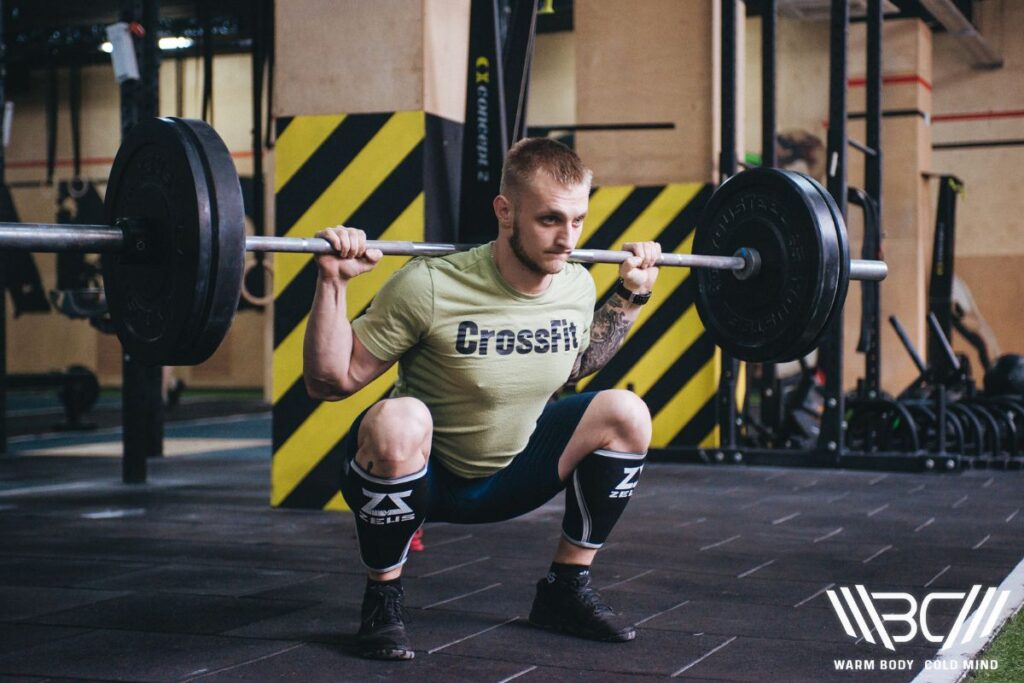
1. Your Upper Back Is Not Tightened
Getting into the start position of a low bar squat is inherently uncomfortable. You have to create and maintain a lot of tension in your upper body. Your shoulders, chest, and back must be really tight. This tightness pops up rear delts as a shelf for the barbell.
Loosening up is a quick fix. The squat gets comfortable as soon as your shoulders are relaxed and your upper back is out of extension. And that’s the origin of the problem. Now, your wrists and forearms are pushing the weight against your back in the absence of that fleshed-out muscular shelf.
Although your arm muscles may be up for the job, tendons wouldn’t be! Persisting with this recipe can lead to tendonitis and an unsolicited week long break.
2. The Bar Is Placed Too Low
Even if you get the start position right, the bar placement can go wrong. With low bar squats, the barbell has to rest on the lowest point where it can stably be carried in a way that your back bears the entire load. Now, some people go overboard with the idea.
What’s that lowest possible point? It’s directly underneath, about an inch below, the spine of the scapula. It’s a prominent plate of bone that separates the shoulder blade’s upper and lower portions (supraspinous fossa and infraspinous fossa).
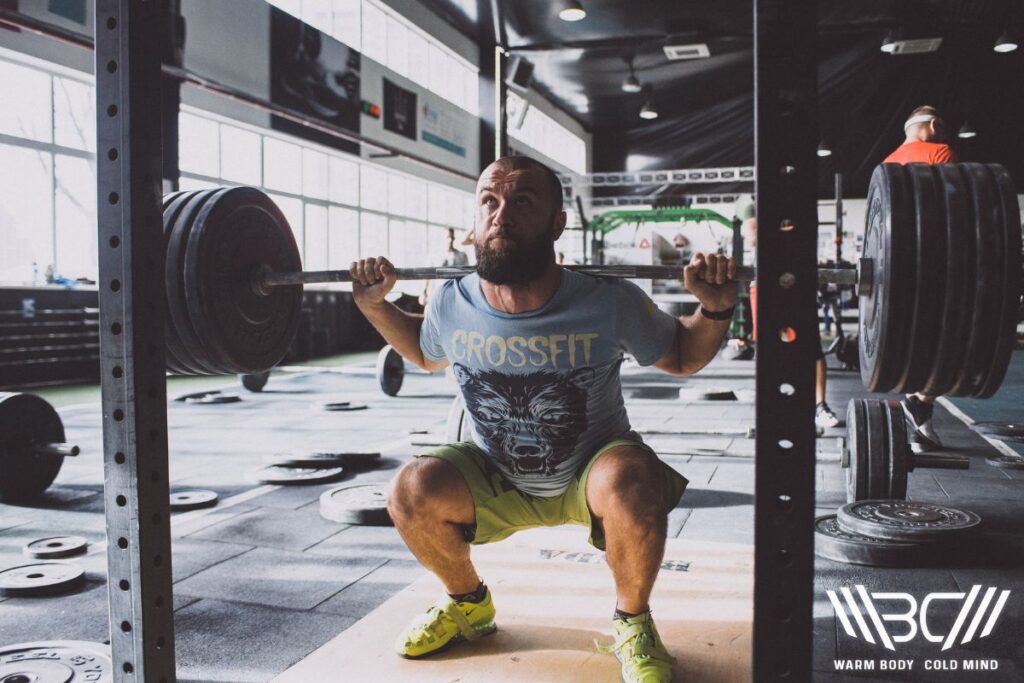
You can almost feel it by poking the back of your shoulder. If you go too down under the scapular spine, the barbell will scoot past traps and deltoids to rotator cuff muscles. In the end, you’ll actively stabilize the bar with your wrists and elbows.
“Use the lower position, where the bar is carried just below the spine of the scapula, on top of the posterior deltoids. This lower position shortens the lever arm formed by the weight of the bar transmitted down the back to the hips, producing less torque at the low back and consequently a safer exercise. If your shoulders are not flexible enough to assume this position at first, they will stretch out over a couple of weeks. The high-bar position can be used until then if necessary, but continue to shove the bar down as low as possible.”
Starting Strength (Rippetoe, 2011)
3. Your Grip Is Extra Wide
The grip width (how far apart your hands are) is also terribly significant for your wrist posture and positioning. Generally, a wider grip strains your wrists more than a narrower grip. A narrow and contracted hold is the preferred low bar squat hand position.
Gripping the bar too wide is going to hurt you in two ways. First, it undergoes excessive radial deviation – the inward cocking of the wrist – which may be painful. Our wrists can naturally deviate less on the thumb side than the other.
Most daily tasks demand a 40-degree ulnar deviation but a mere 17-degree radial deviation. Secondly, taking your hands farther reduces the retraction of shoulder blades and bunching up of deltoids. You will lose the upper-body tightness with a broad grip.
“A standard power bar has 16 ½ – 17 inches between the ends of the outside knurl and 32 inches between the finger marks… Grip width for the squat will obviously vary with shoulder width and flexibility, but in general the hands will be between these two markings on this type bar. A narrower grip allows a flexible person to support the bar better with the muscles of the posterior shoulder when the elbows are lifted… [It] tightens your shoulder muscles so that the bar is supported by muscle and doesn’t dig into your back.”
Starting Strength (Rippetoe, 2011)
4. Your Elbows Are Sinking
Remember, you want to get the bar grip and placement on point all the time. Mostly, lifters start loosening the tension when getting out of the hole. It coincides with thoracic flexion and the dropping of the elbows.
Keeping your elbows up is an amazing cue to avoid elbow and wrist pain from low bar squats. Couple it with a thumbless grip. When you hold the bar with a thumbaround or talon grip, you immediately introduce compression into the radiocarpal joint.
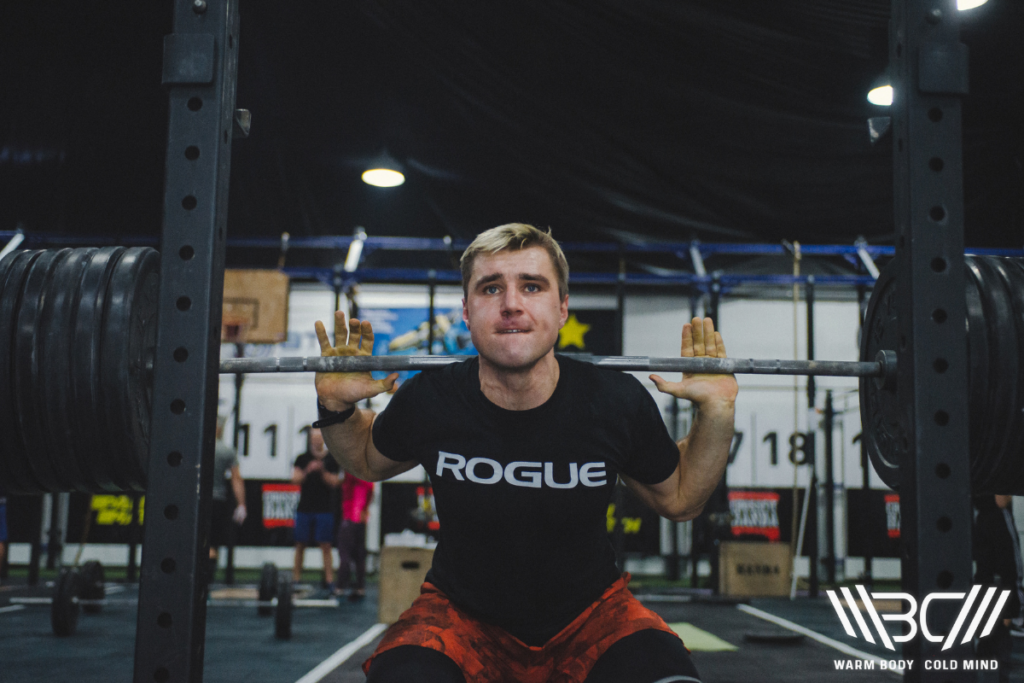
It disrupts the neutral posture of the wrist, intercepting some of the load. What happens is that the soft tissues that attach to your wrist joint and bony bump on the inside of your elbow can’t handle the stress and develop tendonitis.
Don’t extend or flex your wrists. Keep it perfectly lined at an angle with your elbows and forearms. The fat part of your thumb should contact the bar while none of your wrist, forearm, or elbow sits directly under the load.
Subscribe!
The latest reviews of must-have home gym training equipment, apparel, and supplements that will enhance your performance and bring you new results.
How to Fix Wrist Pain While Squatting?
Identifying the problem is the first step toward solving it. In order to alleviate wrist pain when squatting, you need to revise your setup. Make sure you’re receiving the barbell on back muscles perfectly capable of sustaining 500 lbs or more. In the process, you may have to adjust the bar height, grip width, and positioning of elbow and wrist joints.
Following are a few more mitigation strategies you can try.
1. Mobility Drills
Failing to get into the optimal start position for low bar squats exposes mobility issues. Working on your wrist’s range of motion seems to be a reasonable solution. You should be able to move your wrists across all planes.
However, shoulder stiffness plays a defining role in overall restriction. Therefore, you should consult an expert to check and fix your shoulder mobility. Sometimes, tightness in the lats also cuts off external rotation, flaring elbows back and unbalancing the bar.
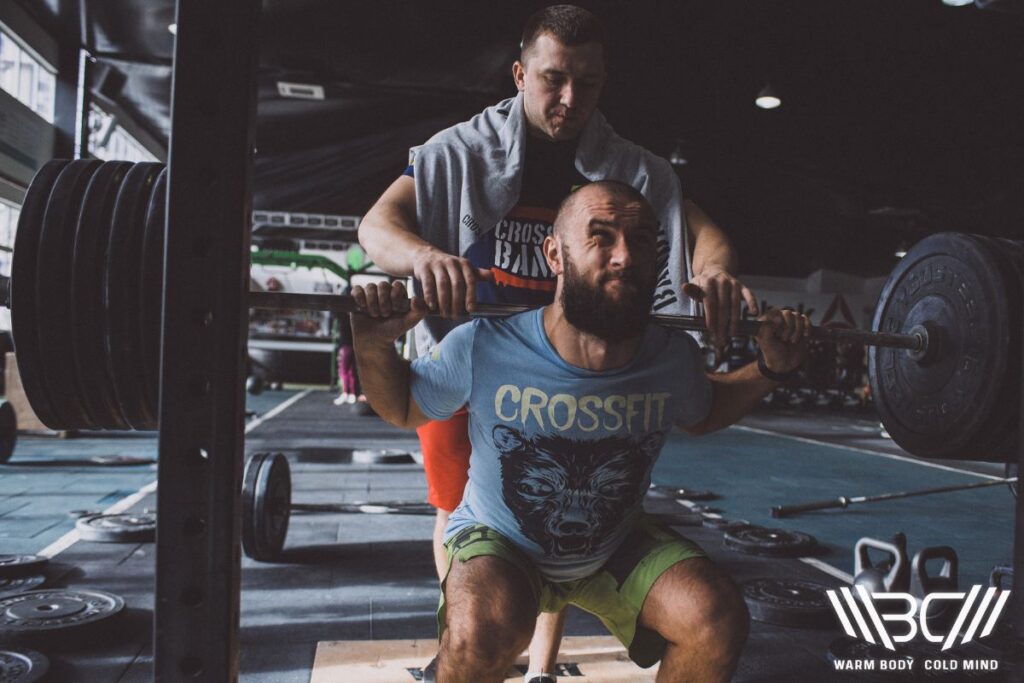
2. Specialty Bars
Trying different barbells is another viable option. Gyms geared toward competitive powerlifters have multiple speciality barbells, like Duffalo and safety squat bars. The latter is a typical steel-cambered rod with ample padding and a pair of handles in the center.
It accommodates multiple grip styles, letting you squat despite mobility issues. Remember, you can’t perform low bar squats with it. You should continue doing stretches, soft-tissue massage, or whatever remedy you’ve been advised to enhance flexibility.
3. Wrist Wraps
Wrapping your wrists can also have a pain-relieving effect. Powerlifters use wrist wraps to enhance performance and protection during maximal attempts. Although the research on ergogenic benefits is sparse, we can attest to the safety boost.
A snugly-wrapped strap removes unwanted movement of the wrist. It can help you maintain a neutral position. It should be tight enough to resist excessive wrist bending but not too tight to be painful itself.
Our Recommended Wrist Wraps – Warm Body Cold Mind (WBCM) Elastic Velcro Wrist Wraps
Warm Body Cold Mind (WBCM) Elastic Velcro Wrist Wraps are an excellent, economical option for keeping all sorts of intensity workouts safe. They’re made with 100% premium cotton, canvas webbing, and reinforced stitching.
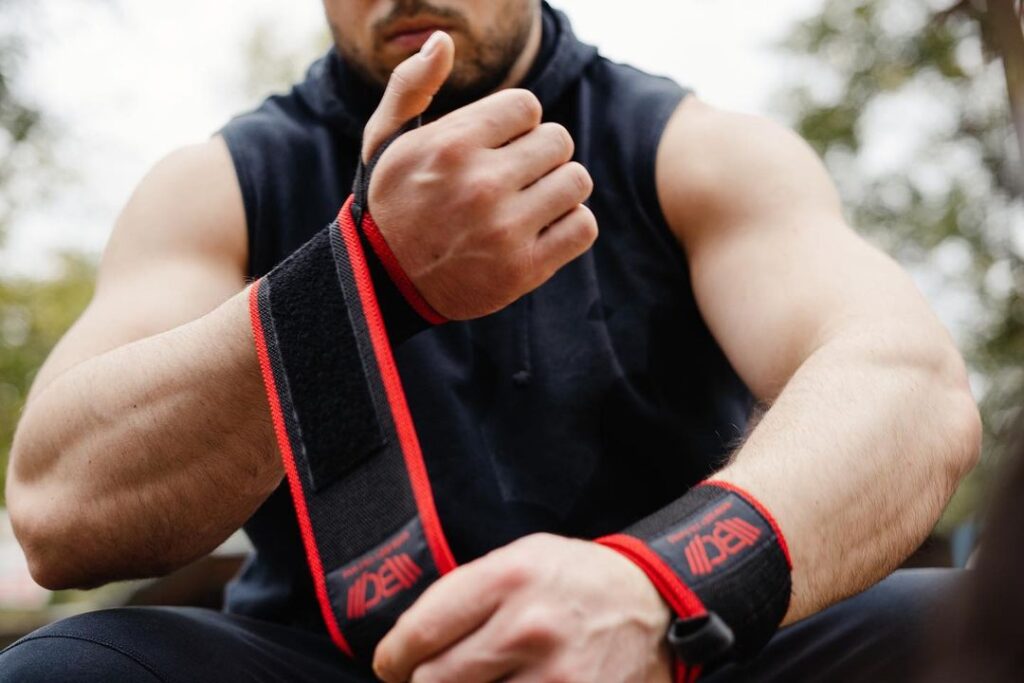
Available in 12″ and 18″ lengths, you can use these wristbands for ultimate joint support and stability. An elastic Velcro strap provides seamless and secure adjustability with an anchor for your thumb. You can’t doubt its durability or versatility.
FAQ
Why Does Low Bar Squat Hurt My Wrists?
Getting wrist pain during low bar squats is primarily due to a faulty technique. You’re either placing or gripping the bar wrong. The reason may be the lack of shoulder mobility, which prevents sufficient back extension and forces your wrists to bear some of the load.
Do You Need Wrist Wraps for Low Bar Squats?
Wrist wraps aren’t mandatory for low bar squats. However, you can try them on to keep your wrists neutral throughout the lift. Tight wrapping eliminates unwanted motion of carpal bones.
Are Low Bar Squats Safe for Wrists?
Squats are supposed to place the least stress on your wrists compared to bench presses and deadlifts. However, if you actively involve your wrists and elbows in squatting bulky loads, pain and injury are inevitable.
Conclusion
Low bar squat wrist pain is more common but less complicated than you think. When you’re switching to this fantastic variation, check your shoulder mobility. Wait to load your one-rep max. First, see if you can receive the bar on the top of your bunched-up posterior deltoids and the base of traps without stressing your wrists. It may take some getting used to. But slowly and steadily, you’ll be there.
Do you face wrist pain when doing low bar back squats? Where do you think you’re getting the setup wrong? Hopefully, this article will help you spot and fix the issue. Do let us know your feedback in the comment section.
References:
- Michal Murawa, Anna Fryzowicz, Jaroslaw Kabacinski, Jakub Jurga, Joanna Gorwa, Manuela Galli, and Matteo Zago, “Muscle activation varies between high-bar and low-bar back squat,” PeerJ 8 (2020):e9256
- Glassbrook, Daniel J.; Brown, Scott R.; Helms, Eric R.; Duncan, Scott; Storey, Adam G., “The High-Bar and Low-Bar Back-Squats: A Biomechanical Analysis,” Journal of Strength and Conditioning Research 33 (2019):S1-S18
- A K Palmer, F W Werner, D Murphy, R Glisson, “Functional wrist motion: a biomechanical study,” J Hand Surg Am. 10, no. 1 (1985):39-46
- Jason D Lehman, Karthik R Krishnan, Jeffrey G Stepan, Benedict U Nwachukwu, “Prevalence and Treatment Outcomes of Hand and Wrist Injuries in Professional Athletes: A Systematic Review,” HSS J. 16, no. 3 (2020):280-287
- Doohee You, Allan H. Smith, David Rempel, “Meta-Analysis: Association Between Wrist Posture and Carpal Tunnel Syndrome Among Workers,” Safety and Health at Work 5, no. 1 (2014):27-31
- Erin M. Nance, David J. Byun, Yoshimi Endo, Scott W. Wolfe, and Steve K. Lee, “Dorsal Wrist Pain in the Extended Wrist-Loading Position: An MRI Study,” J Wrist Surg. 6, no. 4 (2017):276-279
- Rippetoe, M., & Kilgore, L., Starting Strength: Basic Barbell Training (Chicago: The Aasgaard Company; 2nd edition, 2011), 19-20
- J Y Ryu, W P Cooney 3rd, L J Askew, K N An, E Y Chao, “Functional ranges of motion of the wrist joint,” J Hand Surg Am. 16, no. 3 (1991):409-419
Author: Sergii Putsov
PhD in Sport Science, Olympic weightlifting, Strength & Conditioning coach and fitness expert
Sergii Putsov is a professional weightlifter with over 20 years of experience and multiple national medals. He was a member of the National weightlifting team, competing in the 94 kg weight class. Sergii holds a master’s degree in Olympic & Professional Sport Training and a Ph.D. in Sport Science. After his athletic career, Sergii transitioned into coaching and is now responsible for designing training programs, writing blog articles, providing live commentary for international weightlifting competitions, and hosting sport and fitness seminars worldwide.

